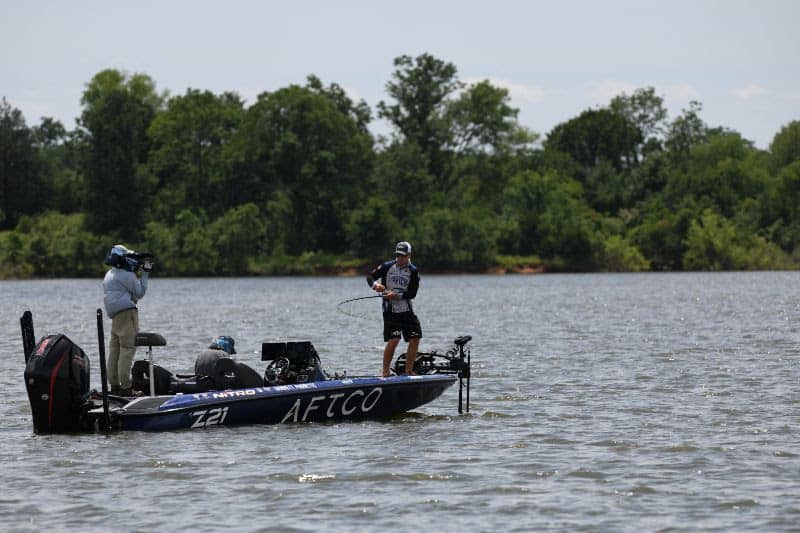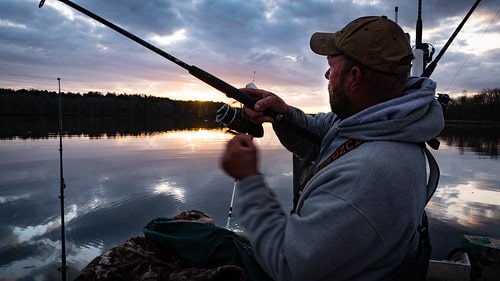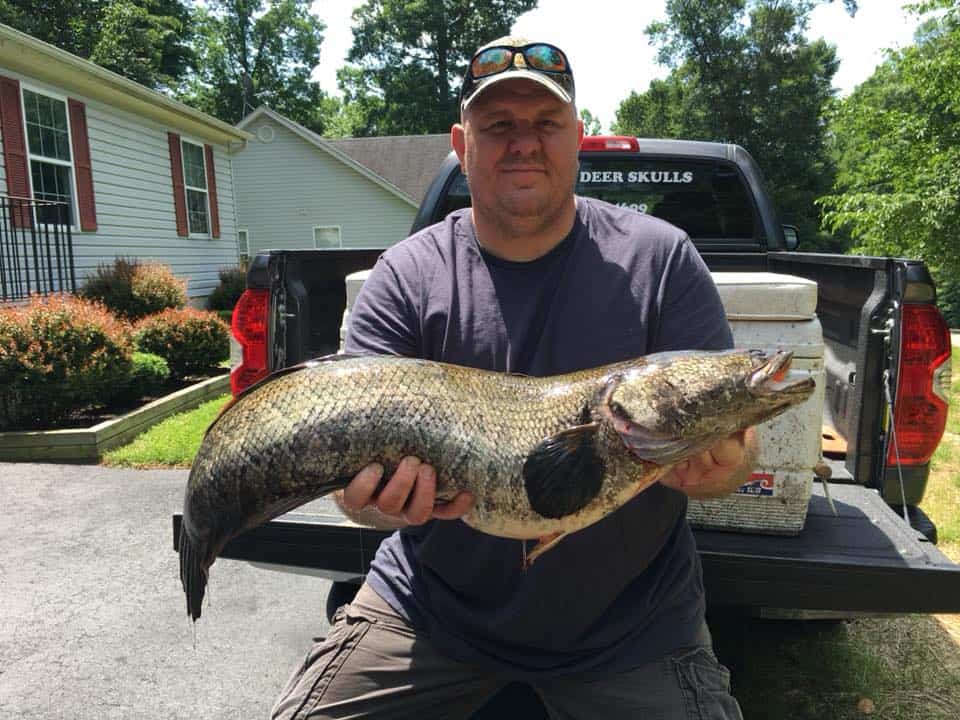Ask freshwater anglers in the region to name the best river for largemouth bass, and odds are good they’ll say the Potomac River. And rightly so: this Bay tributary that cuts through our nation’s capital has been world-renowned for its bass fishing.
But let’s not overlook the James River, where the pros are flocking this week. From Thursday through Saturday, the Bassmaster Eastern Open will attract bucketmouth experts from all over the region. Fishing begins at 6 a.m. from Osborne Park and Boat Landing. Weigh-ins on Days 1 and 2 will be held at the landing at 2 p.m., and the final-day weigh-in will be at 3 p.m. at the Bass Pro Shops in Ashland, Va.
The James River’s unique characteristics make it interesting for competition. Being relatively close to the Atlantic Ocean, the James is tidal. That means water fluctuations will challenge angler’s skills, especially competitors who haven’t encountered water like this.
Professional angler Garrett Paquette has fished the James before in tournaments, and told bassmaster.com that “one thing you always have to prepare for when you fish the James River is the tides—and the tides this year are going to be completely different than they were last time I was there…things that worked for me last time, I just can’t see working for me until maybe Day 3. I’m kind of getting nervous about it already.”
Paquette said anglers will basically have two choices: “Find an area with fish and sit in there all day—high tide, low tide or whatever—and just kind of change presentations throughout the day,” or “fishing really specific targets and running the tide, just moving around the river and hitting the specific stretches you want to fish at just the right time.”
Paquette thinks it’ll take 13 to 14 pounds of bass per day to challenge for a spot on the podium. Bass anglers keep the fish alive in their aerated live wells, and after weigh-ins, release them.
According to B.A.S.S., the godfather of bass fishing organizations that celebrated its 50th anniversary last year, more than fifteen million anglers nationwide chase largemouth bass. B.A.S.S. alone has more than half-million members. True, bass anglers can be accused of being fanatical in their pursuit of big lunkers, but we could easily say that stripers, red drum, and tarpon inspire the same emotions.
Since largemouth bass are largely a catch-and-release species, and found in all lower 48 states as well as parts of Canada, Mexico and even in Cuba, the fish’s popularity is understandable. The fact that largemouth fight hard and hit lures harder, and can be caught from shore or boat, just adds to their appeal.
If you’re curious where the acronym B.A.S.S. came from, founder Ray Scott credits outdoors editor Bob Steber of the Nashville Tennessean with coming up with the name in 1967. According the B.A.S.S. website, Scott said Steber suggested the Bass Anglers Sportsman Society. Scott at first thought that name was too long, but changed his mind when Steber said, “Yeah, but that’s another reason they’ll call it B.A.S.S. for short.”
-Capt. Chris Dollar




